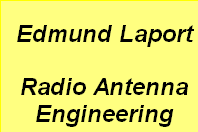

Antentop is FREE e-magazine devoted to Antennas and Amateur Radio an
Special page devoted to
Water Pipe T-Joint at VHF Antennas

Custom Search
|
|
ANTENTOP-
01- 2008, # 010 |
Water
Pipe T-Joint at VHF Antennas |
||
|
|
|
|||
|
|
4. Antenna elements are fastened without drilling the
traverse. 5. Avoid screw, nuts and clamp in fastening of antenna elements. 6. T- joint is mechanically strong the antenna element. 7. Weight of one antenna element in length of 1 meter
made from of a silumin tube in 10-mm
OD with the T- joint was only 70 grams. 8. Antenna made by step by step stringing of the T-
joints with already installed there antenna elements. How to use T- joint at antenna? Picture1 and 2 show
the way. However, some advices are below. Take T-joint that has
ID closest to a diameter of antenna traverse. If the T-joint has
ID Less the diameter of antenna traverse you need gnaw
through to obtain needed ID. Leave wall thickness not less the
2 millimeters. Do ID on to 0.5- 1 millimeters less the OD of the traverse
and do longitudinal cut in the lower part of the T- joint. At
the case before installation of the T- joint to the traverse a
small thing (like wooden or metal bar) should be inserted into
the cutting. See Picture 3.
When the T- joint is sitting at the right place at the traverse
just remove the bar and the T- joint would be fastened well to
the traverse.
Picture 3. |
It is possible hard fastened the T- joint to the traverse
by 1-2 small screw. Another way for hard fastening- put some glue
in to pipe-bend. The pipe- bend was closed by a plastic washer
and epoxy. ( See Picture 3.) Holes for antenna elements should have ID on to 0.2-
0.5 millimeters less the OD of the antenna element. The holes
should be drilled with drilling machine. T-joint at drilling should
be placed on to horizontal table of the drilling machine. Antenna
elements go through the holes with pressure but then hard fastened
at the T-joint. Active dipole vibrator made from two halves may be
fastened to T- joint with help of a plate made from a good and
mechanically hard insulated stuff. It may be thick PC, thick plexiglass. The plate is fastened to cut side tap. See picture 4.
Picture 4 However, it is possible to insert two half vibrator
into a thick rod from an insulated stuff, then the rod with the
active vibrator is fastened into the T- joint above mentioned
ways (See picture
2,
3) T- joint was
tested to strength after being three hours at minus 28 degrees
Celsius. Attempt to break the T- joint pooling of the antenna
element (fastened inside the T- joint) is failed. Antenna element
was broken (4-mm OD silumin) , T-joint- no. It was tried to break the T- joint with
help of a hammer. Hammer left only slight dent on the T- joint
but no any crack. Using prepared T-joints (with drilled holes for antenna
element and traverse) it takes from me only several hours to assemble
7- elements VHF antenna. Hope, it will work long time for me.
See picture 5. |
||
|
|
||||
|
|
|
|||
|
|
Page 52 |
|||
 |
 |
 |
 |
Just for Fun:

Powered byIP2Location.com
Thanks for your time!
Last Updated:
February 2, 2020 23:18







